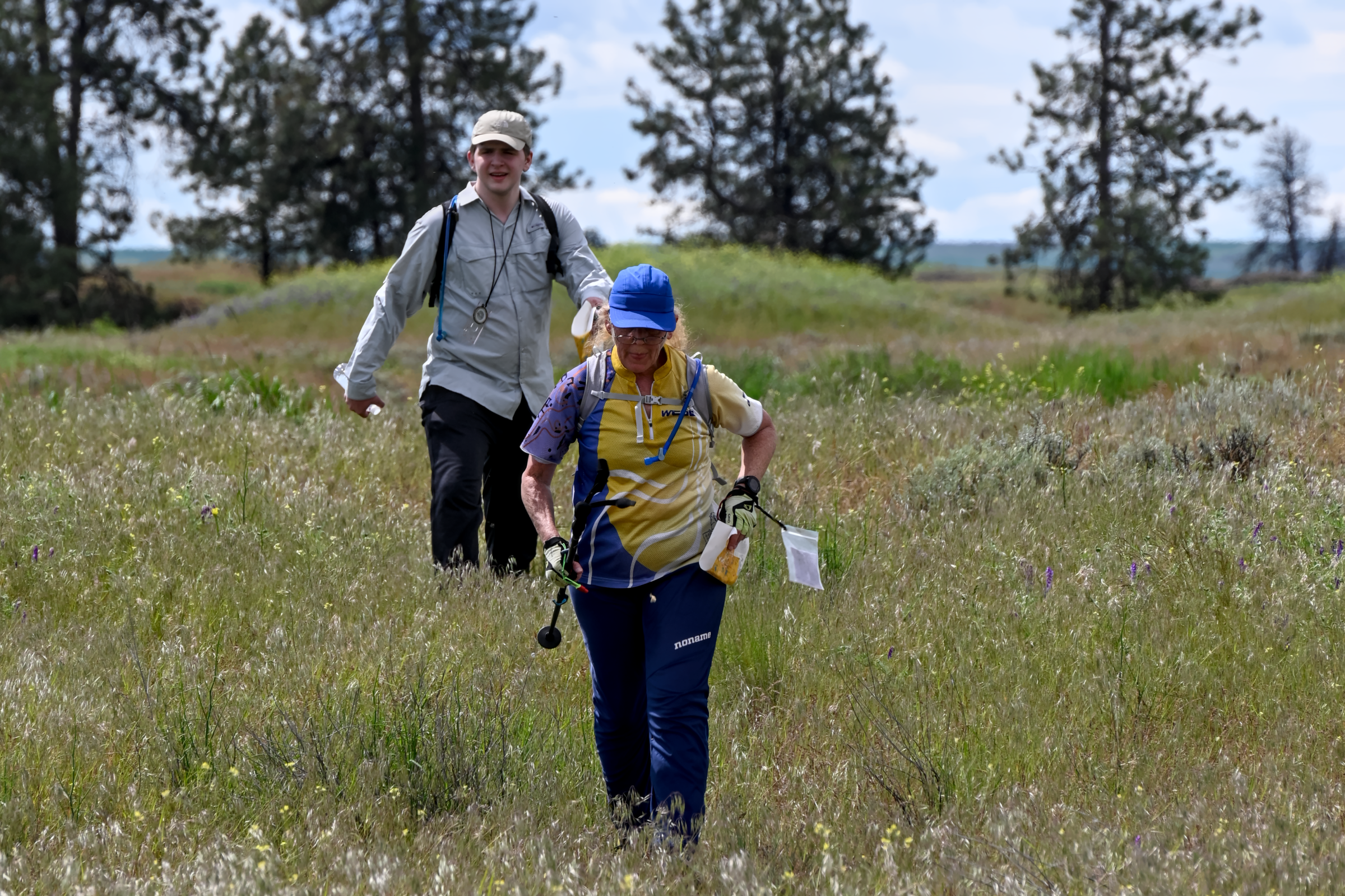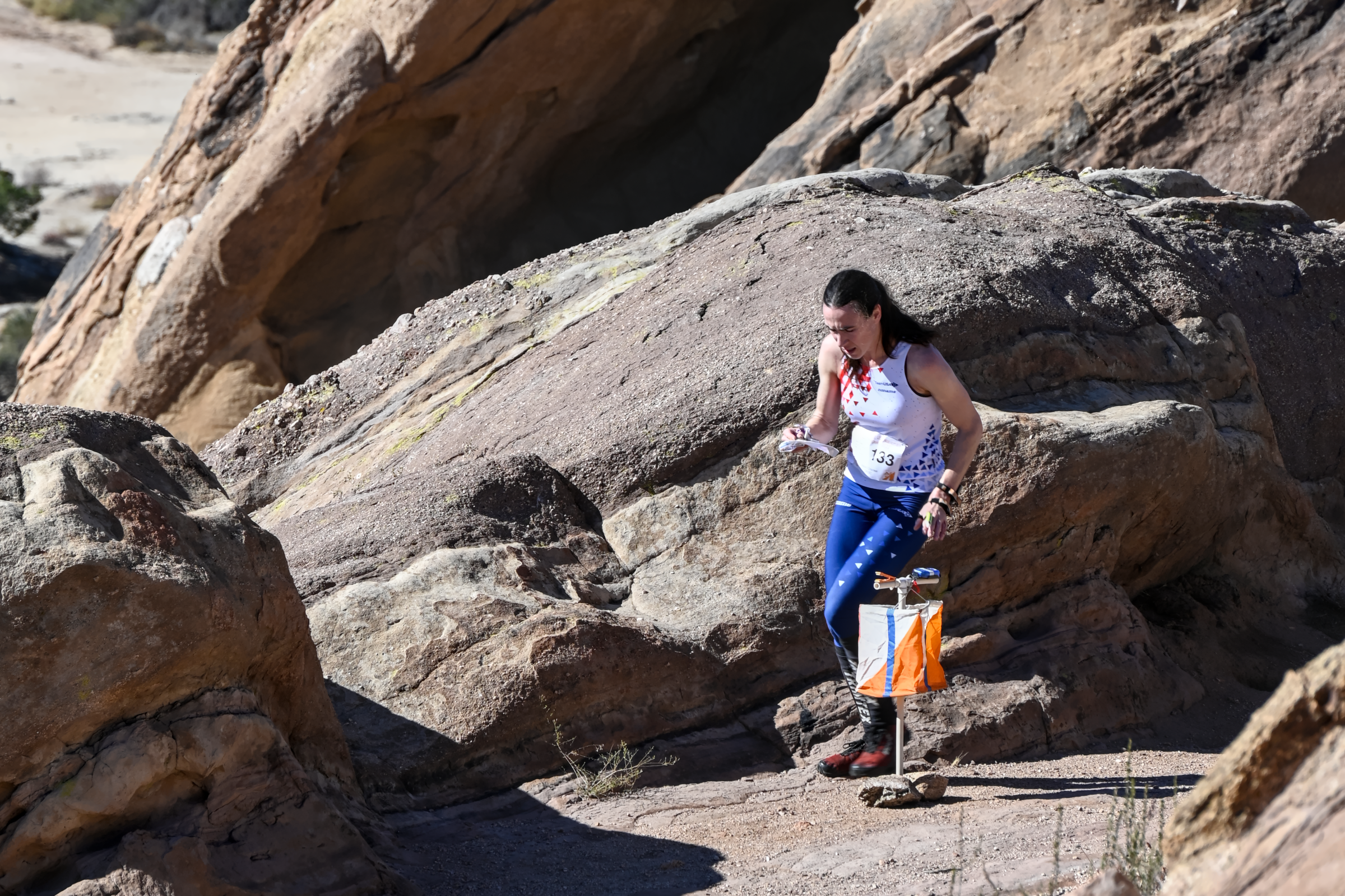If getting lost in the woods sounds like fun to you, you’d love orienteering.
The sport involves navigating through unfamiliar terrain, often in a forest, to locations circled on a detailed topographic map. (These spots are typically marked by a flag, and participants record proof that they were there, sometimes with a small electronic device.) You can only use your map and a compass—no smartphones or GPS—to guide the way. Rather than following one specified route, people need to figure out what path makes the most sense, while maneuvering around obstacles like bodies of water, hills, or boulders.
While it’s still under-the-radar in the U.S., thousands of spectators and participants consistently attend events throughout Europe. Orienteers—who range in age from children to seniors—show up to have adventurous fun, meet new friends in a beautiful setting, and enjoy a variety of mental and physical health benefits. Research suggests orienteering contributes to enhanced fitness (by improving aerobic capacity, flexibility, and speed), lower levels of psychological distress, and better brain health.
“We brand it as a sport for life, because it’s adaptable to your skill and physical abilities,” says Emma Waddington, a graduate student in kinesiology at McMaster University in Canada who conducted a recent study about orienteering’s impact on the brain. She’s also an athlete on the Canadian National Orienteering Team, traveling the globe to compete in races. “I saw these older adults out there and I was like, ‘What are they doing differently that allows them to be engaging in such a cognitively demanding sport at such an old age, when we typically see declines in spatial skills and memory?’”
Waddington’s study, published in January in PLOS One, suggests the sport could help fight or prevent age-related cognitive decline in spatial navigation and memory. After surveying 158 people ages 18 to 87, the researchers concluded that orienteering “may be more beneficial than physical activity alone.” That’s because exercising while navigating activates the parts of the brain our ancestors used for hunting and gathering—but which are largely dormant now as people rely on GPS to find their way around. While it’s convenient, such technology could be doing the brain a disservice. “We’re going back to our roots, rehearsing the spatial tasks that we don’t get to do much anymore,” Waddington says. And you don’t have to spend much time doing it to benefit: “A little goes a long way.” In early data, her team is finding that even a one-time, 15-minute orienteering session might lead to gains in cognitive function.

If your interest is piqued, Waddington and other experts recommend reaching out to a local club; there’s at least one in most states. Orienteering events typically consist of three or more courses with varying lengths and difficulty, so even newcomers can show up, get a quick lesson, and test out a beginner route. It could take anywhere from 15 minutes to a couple hours to complete. “Your goal is to navigate a series of checkpoints as fast and efficiently as possible,” Waddington says. “You’re moving through difficult terrain while trying to relate the information you’re gathering from the map to what you can see in front of you.” That’s why orienteering is often called “the thinking sport”—it’s like solving a puzzle.
Almost anyone can give orienteering a whirl, says Ian Shields, 74, who’s a member of Backwoods Orienteering Klub in Raleigh, N.C. Aside from the welcoming and inclusive atmosphere, it’s affordable: Participants usually pay about $7 to register for one of his club’s events, which includes the cost of a map, and then an extra $5 for a finger stick, a small electronic device that records your start and finish times. He suggests bringing water and a safety whistle, and wearing hiking gear and insect repellent.
Read More: Rock Climbing Is a Thrill. It’s Also Really Good for You
Shields has lost some of his vision since taking up the sport more than a decade ago, but that hasn’t dampened his enjoyment; he simply uses a larger map now. He regularly orienteers with people who are under 10 and over 95. “You can compete against a buddy who runs the same level of course as you do, or against your previous record,” he says. “You can try and be the fastest in the whole group, or the slowest.” He’s not particularly speedy—he jokes that the only way he’ll win a race is if he outlives all his peers—but he’s OK with that. There’s no pressure in orienteering. “We have one lady who comes out and spends more time photographing the flowers, and sometimes she finishes the course and sometimes she doesn’t,” he says. The benefits are clear regardless. “It keeps your brain working. I’m certainly benefiting from it, because I actually get out and do something.”
Orienteering is like forest bathing, but with an athletic twist, says Clinton Morse, 61, who lives in Connecticut. He’s been orienteering since the mid-90s and loves the sport so much, he retired early a few years ago to dedicate more time to it. He’s now the national communications manager for Orienteering USA, the governing body for the sport in the U.S. Morse has orienteered in eight states so far this year. “There’s a really good feeling to it,” he says, including a satisfying mental challenge. Some newcomers worry about getting lost, but as long as you start out on a beginner course and learn the sport’s basic tenets, you’ll be fine, he says. “Then you add intuition, and you can basically infer things from the map.”

Paige Suhocki, who’s 15 and lives in New Jersey, started orienteering when she was 10. She was recently selected to represent TeamUSA at the Junior World Orienteering Championships this summer in Romania. “There’s so many different ages of people,” she says. “There are kids younger than me, and there are old ladies still going out there and walking it. I aspire to be them, because they’re getting out in nature and getting exercise.” (Plus, she adds, sometimes the older people beat the high-school kids, “because they know exactly where they’re going.”)
Suhocki believes orienteering has improved her mental and physical health in a variety of ways, including helping her learn to make decisions quickly. She’s on the track and cross-country teams at school, but hasn’t always relished running. When she’s navigating an orienteering course, however, she doesn’t even notice how many miles she’s logged. “I just go out, have fun, and I look at my watch after and I’ve done five or six miles,” she says. One day, when she’s older, she’ll make it a family tradition: “I definitely want to get my kids into it. It’s great to have something to look forward to on the weekends.”
More Must-Reads from TIME
- Caitlin Clark Is TIME's 2024 Athlete of the Year
- Where Trump 2.0 Will Differ From 1.0
- Is Intermittent Fasting Good or Bad for You?
- The 100 Must-Read Books of 2024
- Column: If Optimism Feels Ridiculous Now, Try Hope
- The Future of Climate Action Is Trade Policy
- FX’s Say Nothing Is the Must-Watch Political Thriller of 2024
- Merle Bombardieri Is Helping People Make the Baby Decision
Contact us at letters@time.com